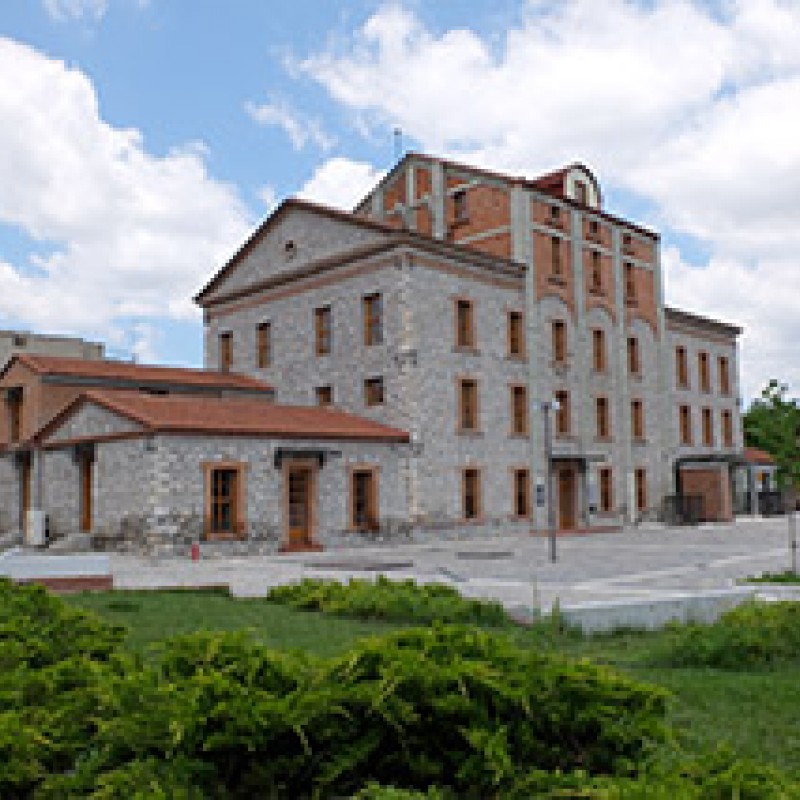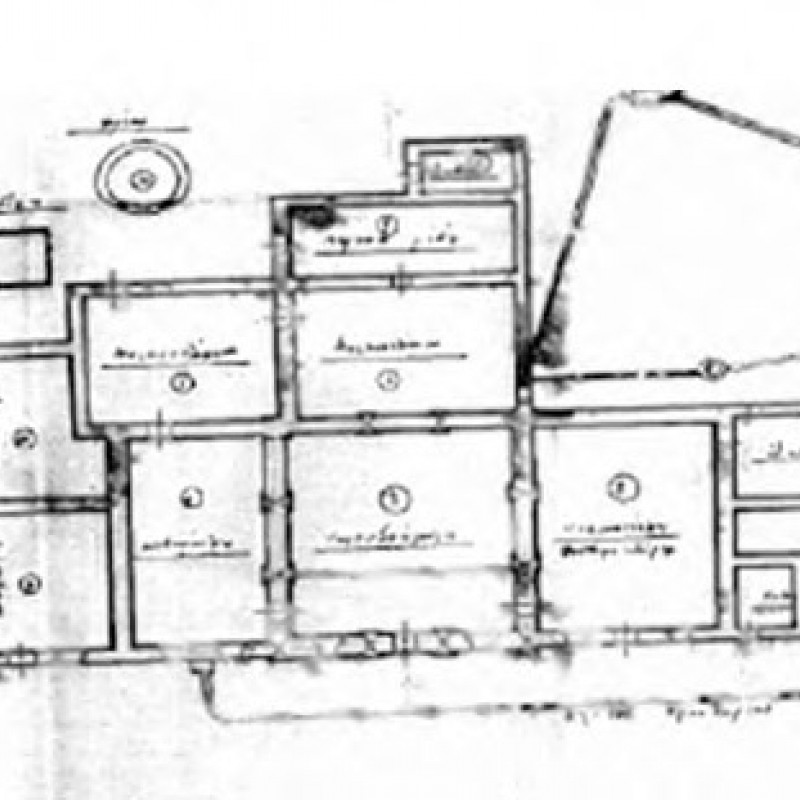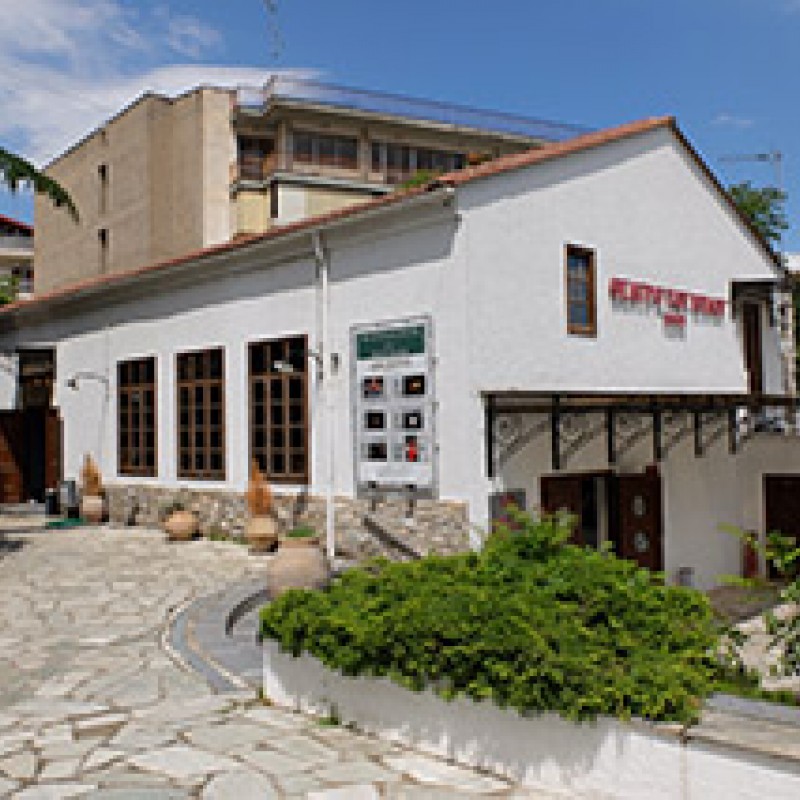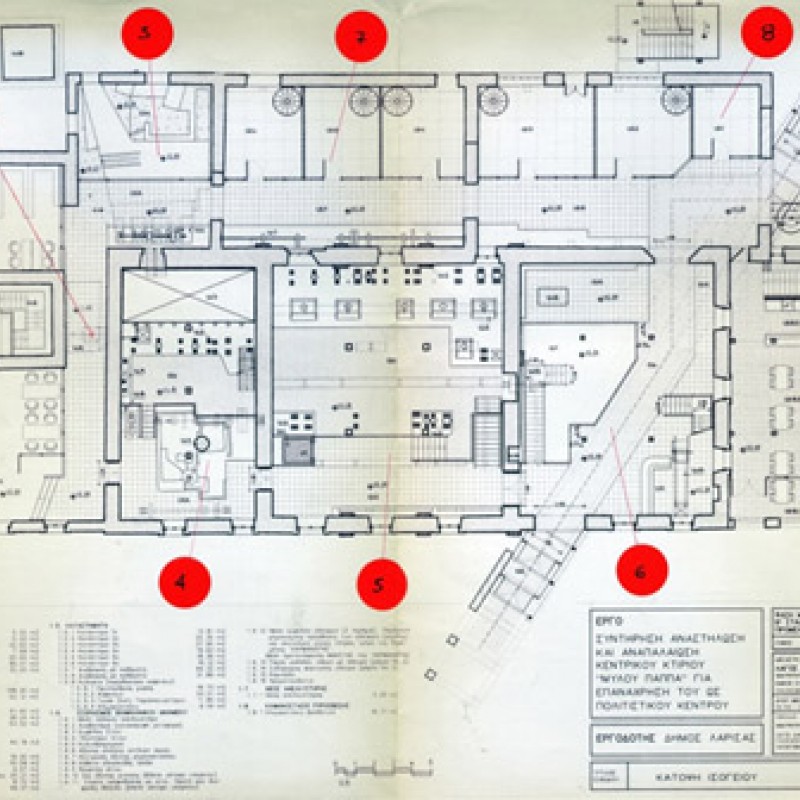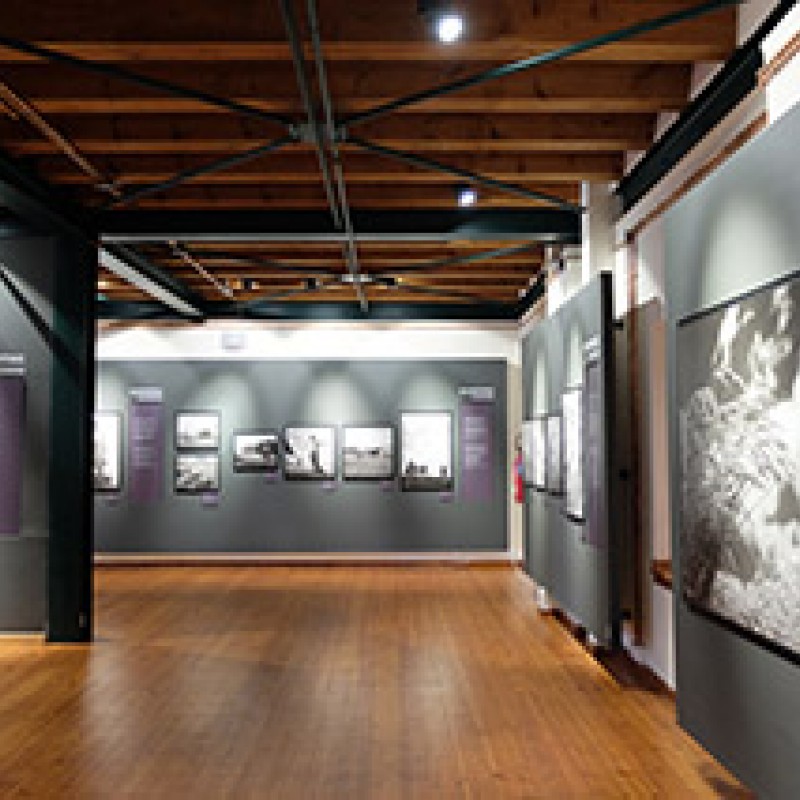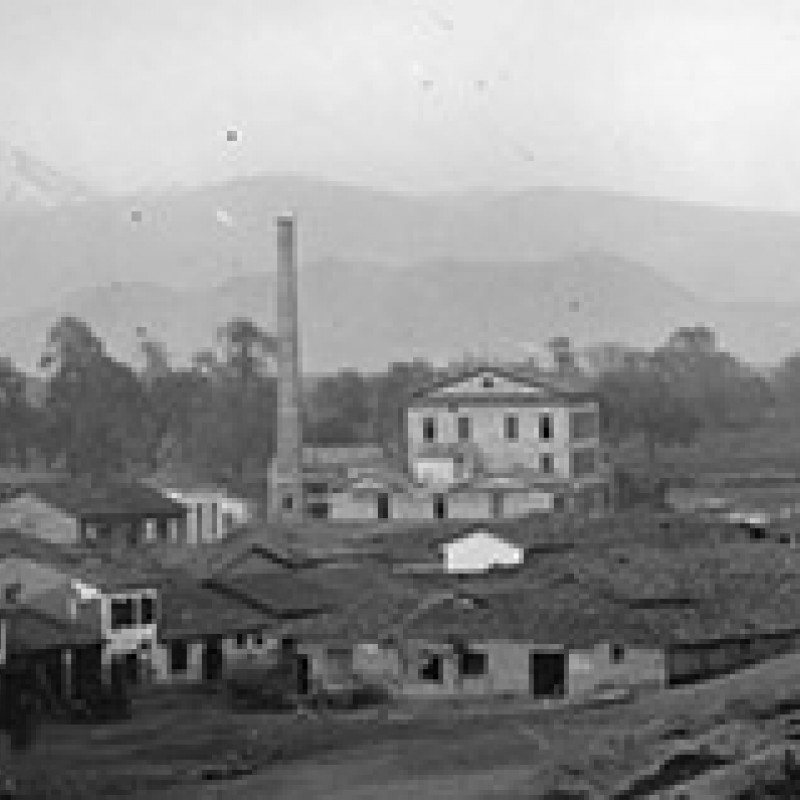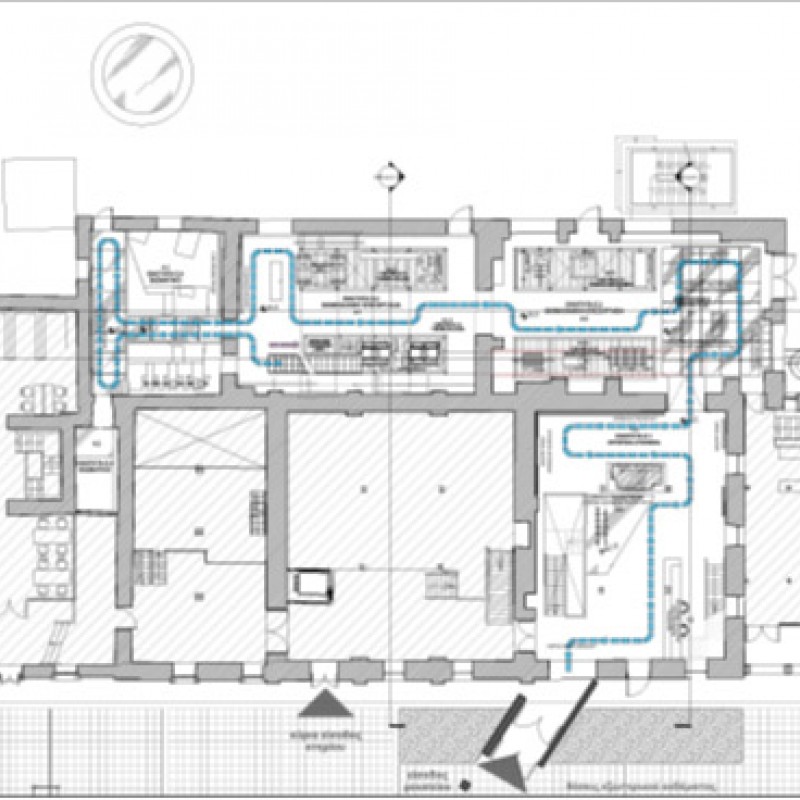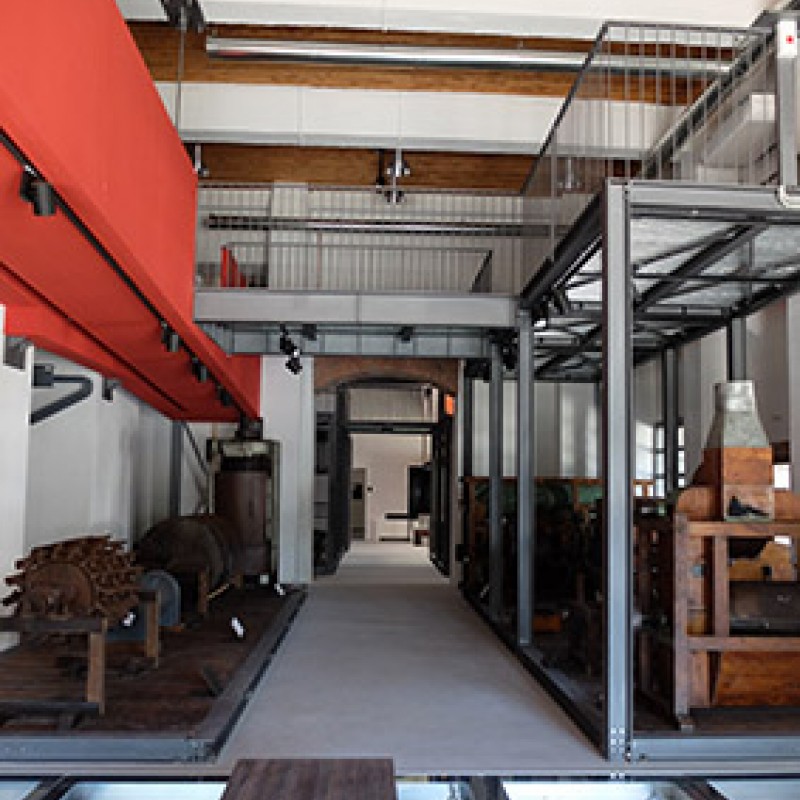Mill of Pappas
Georgiadou 55, Larisa, 41221, Greece
| Former Use: | Flour Mill | 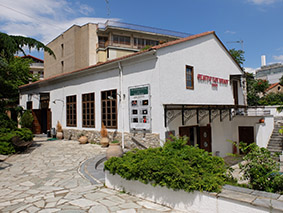 |
| New Use: | Cultural cluster, outdoors cinema, offices of the Section of Culture and Science of the Municipality of Larissa, ,cafe- bars, industrial museum (expected) | |
| Category: | Administration, Culture, HoReCa, Industrial Museum, Recreation | |
| Website: | http://www.larissa-culturestories.gr/el/mnimeia/mylos-tou-pappa | |
| Reuse Architect: | D.Lagos, Directorate of Technical Services of Municipality of Larissa, Skroubelos and Associates | |
| Construction year(s): | 1883 - | |
| Reuse year(s): | 2014 - 2018 |
Description:
Historic use
The Mill of Pappas is located in the northern part of the centre of Larissa, surrounded today by a mixed use urban tissue, characterised by commercial functions, houses, offices and transport facilities. The mill was established in 1883 in the district Tabakika in close proximity to Pinios river, for the production of flour and pasta. In the turn of 20th century the production rose and a bakery was added to the activities of the company. In 1920 the complex was hit by a fire. A year later the mill was reassembled and put back in operation.
The late 1920s saw the extension and modernisation of the mill’s equipment by the German companies AMME-LUTHER and Fried Krupp A.G. Essen. (Oikonomou, 2010, 43) The new machinery required more space, as a result two extra floors were added to the existing mill, shaping the five storey building that forms today the centrepiece of the reused complex. During WWII and the occupation, the mill was requisitioned by the Greek Army, later by the Italian occupants and finally by the Greek People's Liberation Army, while several parts of it were destroyed by bombings.
From 1947, the mill’s reconstitution starts once again. From 1947 until 1983 the company followed a rising course. In order to boost its activity, the director F. Pappas invited German experts to train the personnel, something that had taken place also during the extension of the 1920s. By 1967 a new modernization of the facilities and machinery took place with the daily flour production climbing to 90 tons.
The decline of the company started in the mid-1970s. The adverse legal framework of the Junta, the rising competition from companies with more advanced machinery as well as accumulated debts and management errors lead the company to its closure in 1983. (Municipality of Larissa, 2015)
Reuse Preparation
Five year after its closure, the complex as well as the two surrounding plots were bought by the Municipality of Larissa. According to L. Giovri, Technical Director of the Municipality of Larissa, the C.C. decided to safeguard the mill as “it was the largest and most complete industrial complex of Larissa, located in the centre of the city. It was an important industrial architectural monument and there was nothing similar to it in the city.” (interview 30/5/2017)
In 1989, the mill along with its mechanical equipment was listed as a national monument by the Ministry of Culture. Since then, the C.C. after repairing the mill’s auxiliary buildings, started reusing them gradually, turning the abandoned site into a home for cultural activities. The early 1990s saw this initiative gaining momentum. In 1992, the warehouse behind the main building was transformed into the stage of the Theatre of Thessaly while the eastern and southern buildings were turned into a puppet theatre, a bar-restaurant and a concert hall. A decade later an outdoors cinema was built in the northwest part of the mill’s plot.
Despite these developments, the main five storey building was remaining underused. In the mid-1990s, the C.C. assigned the project of its conservation and reuse to the team of D. Lagos, Ch. Grousopoulos, G. Papantoniou (architects), A. Mantelou (Civil engineer) G. Stefanakis (electrical engineer). At the same time special studies for the structural capacity of the building and the documentation of its machinery were conducted.(Chatzigogas, 2001, 69)
The proposed program was mixed-use including a museum for the mill and the city, a youth centre, library, a conference and cultural activities hall and retail activities related with traditional workshops. The new museum would present the impressive stock of the mill’s machinery safeguarded in its interior. In 2001, discussing the mechanical equipment of the complex A. Chatzigogas (2001, 69) reports:
“…After more than a century of its establishment, the mill presents a unique completeness of the technological evolution that took place in the sector of the flour industry. It started as a steam powered mill with mill stones, it turned into roller mill, it was then equipped with a diesel engine and it later became electric powered… The full production line and a big number of machines of the first extension period (1926-28) are preserved in the building. A lot of mechanical equipment of the newer phase (after 1950) have been sold to other mills of the area. The remaining machinery is older and it has thus a higher historical value”
The exhibition of this impressive material however, along with the proposed reuse plan were never realised. In 2002, while the studies and the necessary approvals had been prepared for the beginning of the works, a fire destroyed the roof and the interior of the listed building, engulfing the large majority of its preserved machinery.
The disaster however, albeit depriving the complex from one of its most valuable features did not cause the abandonment of the project. The reaction of the local authority was immediate and their coordinated endeavours resulted in securing of multiple sources of funding for the repair, restoration and reuse of the historic complex.
Reuse process
The transformation process of the Mill of Pappas was organised in three phases. The first one included the restoration of the burned building and it took place in the period 2004-2006 with an EU funding of c.2.215.000€. In the following years additional works for the operation of the building were conducted with a funding of c.1.951.000€ from the program “Thiseas” and national funds (ΣΑΤΑ). From 2012 to 2016, the third phase of the project took place, funded by the European Program of Regional Development with a budget of 3.800.000€. That included the redesign of the central yard of the mill and the parking space on the north of the complex as well as the transformation of part of the mill into an industrial museum. (Metron O. E. and K. Skroubelos Ph. Skroubelos and Associates, 2013, 5, n.a., 2012, Municipality of Larissa-Directorate of Technical Services-Section of New Projects, 2011, 13)
L. Giovri, discussing the key decisions of the reuse process states:
“What drove the reuse was our wish to create an industrial museum and reintegrate the complex into the city’s life. We also wanted to create an interactive space following the current trends” (interview 30/5/2017)
Elaborating on the same topic M. Kotoula, civil engineer in the technical department of the Municipality of Larissa and supervisor of the mill’s transformation, notes:
“The original plan was to turn the entire central building into a museum of itself. [… After the fire that burned the wooden machines, the concept and the studies changed. The restoration of the building’s shell was based on the design of Lagos’ team. The machinery that survived the fire was preserved and kept in situ. More machines which had been purchased from other mills were also added... An important problem however was the lack of funding. Due to that we had to conduct the project in stages and implement various individual studies. As a result, there was no uniform approach to the construction of the individual projects.” (interview 31/05/2017)
Comparing the floor plans of 1930 with the concept floorplan of 1997 and the realised one of 2013, it is evident that the later ones have respected to a large extent the original distribution of spaces. On the contrary, the pattern of horizontal circulation differs. According to M. Kotoula, (interview 31/05/2017) the vertical circulation is based on the original design of the mill. What is also interesting in the architectural drawings’ comparison is the similarity of the concept floorplan of 1997 and the realised one.
The archival and field research showed that the interior of the reused building, while it was built from scratch due to the extended damages of the fire, it borrows some of the principles of the industrial architecture while employing a modern architectural language and materialisation. The slim concrete and wooden beams were replaced by a steal framework while the wooden floors are supported by wooden beams as it was the case before the fire.
A big difference between the plans of the 1990s and the 2010s is the size of the industrial museum. As M. Kotoula insinuated above, the industrial museum was finally restricted to a small part of the building. Its museological and museographical design were conducted by c + ph architects & associates in collaboration with A. Chatzigogas and G. Stephanakis. In regard to its design principles K. Skroubelos, head of c + ph architects & associates states:
“Our concept was to create a route. We've added a new mezzanine and we placed the entrance on the first floor. From there the visitor follows a functional path. Through it, the building and its old use are being explored. In the old pump house, the only truly authentic space preserved in the mill, we did not add things. In contrast we created an experiential space which will give the possibility to understand the operation of the mill through audio-visual means.” (interview 7/6/2017)
The design of the museum combines the preservation of authentic spaces (pump house) and equipment (industrial machinery of the mill of Pappas and other flour mills) with the addition of new elements (mezzanine, first floor corridor, floor showcases). Those additions, formulated with modern materials (steel and glass) or coated with distinct colours are clearly distinguishable from the original shell. The machinery in display along with the scale models and the interpretation texts provide the visitor with a good insight of the mill’s function and the complex’s history.
Operation
The mill officially opened to the public in 2014, yet a large part of it remained underused during the first couple of years. The first functions it hosted were the Section of Culture and Science of the Municipality of Larissa, the offices of the Theatre of Thessaly and the bar of the Mill. Gradually, more cultural and social activities started using the premises encouraged by the Municipality. P. Sapkas, Vice Mayor, discussing the vision for the mill’s new programme states:
“The Mill is available to everyone. The Vice-mayor’s Office has extended an invitation to the local groups. We wish to create a cultural incubator here. The building currently hosts dance lessons, photography workshops, yoga classes, a cinema club, theater for adults and children and we have also redeveloped the warehouse for creating a pre-schoolers’ centre.
The spaces also host without a change University seminars and book presentations. The comics’ team works like a start-up creative industry. Only the bar and the club are for hire.
The available spaces are allocated to cultural groups. Those do not occupy a space permanently but they can use the facilities on a regular basis for lessons, seminars, meetings etc. We do not ask rent from the groups but we request their contribution to the cultural events we organise. The agreement also includes, a very low price of tuition fees, in case they charge the citizens for their service. […] We encourage cooperation. The teams hosted in the building communicate with each other.” (interview 31/5/2017)
Along with the opening of the mill, another important project was completed in 2014. The redesign of the central yard from a concrete arena to a stone paved-square, played a significant role in the reestablishment of the complex’s character and the attraction of the public. Furthermore, the new parking lot in the north-west part of the plot, facilitated a great deal the accessibly of the mill by car.
With that project the outdoors space was adjusted to the needs of the new functions, boosting the operation of the Mill’s bar, restaurant-club and outdoors cinema which saw their clientele rising. The mix of the later uses that operate in the evening with the cultural ones that take place in the morning and the afternoon turn the complex into a lively place around the clock.
Shifts
At the time of the field research (29/5-1/6/2017), an important piece of the new program was still missing. Even though the final design, the construction and the fittings of the museum had been completed, it remained closed to the public. According to an article of the newspaper Eleftheria (Poligeni, 2018) its operation bumps to bureaucracy issues related with the employment of the required staff.
The museum is expected to have a very positive impact on the complex’s operation, giving it a new dynamic. Its operation will attract various target groups including families, school groups, specialists et. al., who will be familiarised with the history and the former function of the mill as well as with its current program. In that sense, the museum will play a key cultural role while boosting the new program housed in the complex.
Relevant Literature:
- Chatzigogas, A. 2001. The mill of Pappas in Larissa- Technological evolution. Technologia: Bulletin of the Cultural Technological Foundation of the Hellenic Industrial Development Bank, 10-11, 68-69.
- Metron O. E. & K. Skroubelos Ph. Skroubelos and Associates 2013. Museological and museographical study for the Museum of Pappas (preliminary study):. Athens: Municipality of Larissa.
- Municipality of Larissa-Directorate of Technical Services-Section of New Projects 2011. Proposal of the Municipality of Larissa for the funding of the project : Cultural centre-Museum of Pappas Mill. Larissa.
- Municipality of Larissa. 2015. Mill of Pappas 1893 -1983 [Online]. Available: http://www.larissa-culturestories.gr/el/mnimeia/mylos-tou-pappa [Accessed 2 August 2018].
n.a. 2012. The museum of Pappas Mill in Larissa. tvxs, 15 April. - Oikonomou, P. 2010. The ervolution of the flour industry in Thessaly: The Mill Of Pappas in Larissa. Master's thesis, University of Thessaly.
- Paliouras, D. 2001. Industrial development in Thessaly. Kathimerini. Epta imeres, 7 January.
- Poligeni, N. 2018. The museum of cereal and flour in Larissa is ready. Eleftheria, 18 March.
- Toufexi, E. 2015. Let's go to the yard of the Mill of Pappas. larissanet.gr, 2 June.
